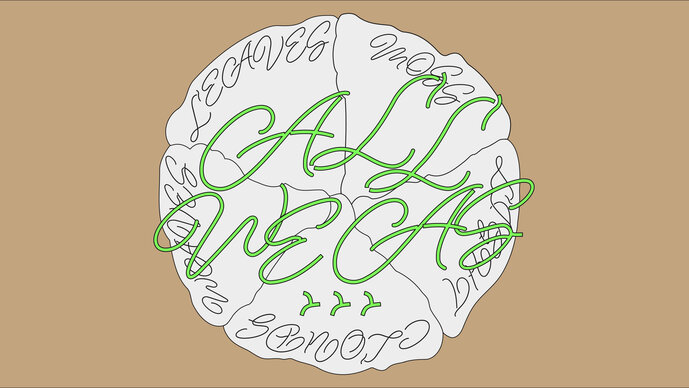

© Barbara Acevedo, Phil Zumbruch, Jannis Zell
Vernissage on 02.06. at 6 pm
From June 2 to 19, 2022, diplomas, master's and doctoral theses, including films, installations, performances, documentary material and reconstructions, will be exhibited in the atriums of the HfG under the title "HFG GRADUATES 21/22 - All we as". They are qualification works for obtaining an academic degree - but what else do these works stand for? As the results of mostly extensive collaborative processes, they are witnesses to shared play and trial and error. HfG Graduates focuses on these connections and intersections, in search of what we can only think, realize, and exhibit together.
As temporary alliances, different forms of association open up spaces for mutual learning, support, and critique. These variations find expression in the title All we as. All we as leaves is a line from "Plainwater" (1995) by poet Anne Carson. We expand it to All we as light, All we as clouds, All we as moss, All we as waves, making them the titles for the thematic fields of the exhibition:
From the cyclical course of sunlight, the coming and going of love, to idiosyncratic practices of archiving, to places and situations that exist only in memory and require reconstruction - the thematic cluster All we as leaves deals with loss, nostalgia, and the melancholy of the resurgent past.
Final projects from the cluster All we as waves deal with existing and to-be-designed social spaces and thus communities: utopian designs that formulate a new answer to the question "Who is man?" on an architectural level: The struggle for places of assembly, the visibility of women in Karlsruhe's cityscape, or the hyper(in)visibility of normed bodies are negotiated here.
All we as moss can easily be connected to this. This group deals with urgent ecological questions that (must) have an impact on our human self-understanding. In this sense, the works invite us in different ways to develop a new relationship to the human and non-human entities surrounding us and to let them surprise and affect us.
Exploring transformative processes from a technological perspective unites the works in All we as clouds. Media such as TikTok, YouTube, or the cassette are not only observed in terms of their roles in various conflicts, but also in their function of detaching image and language from the body. The latter also becomes the subject of performative experimentation - what happens to communication when we try to keep proximity at a distance? Artificial intelligences learn, reproduce and manipulate visual languages and perception. What does creativity mean then, and how will work adapt to it?
The fourth cluster, All we as light, asks questions about showing things: How and in what contexts is something shown? Who decides what is shown? And how does this affect perception? Showing can be funny, change conditions of perception and tell stories. But showing is also, and this becomes equally clear, never neutral and is often turned into an ideological instrument.
The program accompanying the exhibition was also developed in close collaboration with alumni and includes guided tours with the curatorial team, workshops with Severin Geißler and Mäks Rößmöller, among others, special screenings of the film diplomas with subsequent discussions, performances by Mustafa Büy. by Mustafa Büyükcoskun, Lukas Fütterer and Zhou Pei, reading circles by Carmen Westermaier, a reading by Carina Obrecht, and panel discussions with our guests, such as the computer graphic artist Vincent Schüßler.
The extensive program accompanying the exhibition can be found online here: https://www.hfg-karlsruhe.de/en/aktuelles/diplomausstellung-2022/
Click here to go to the HfG Graduates 21/22 website